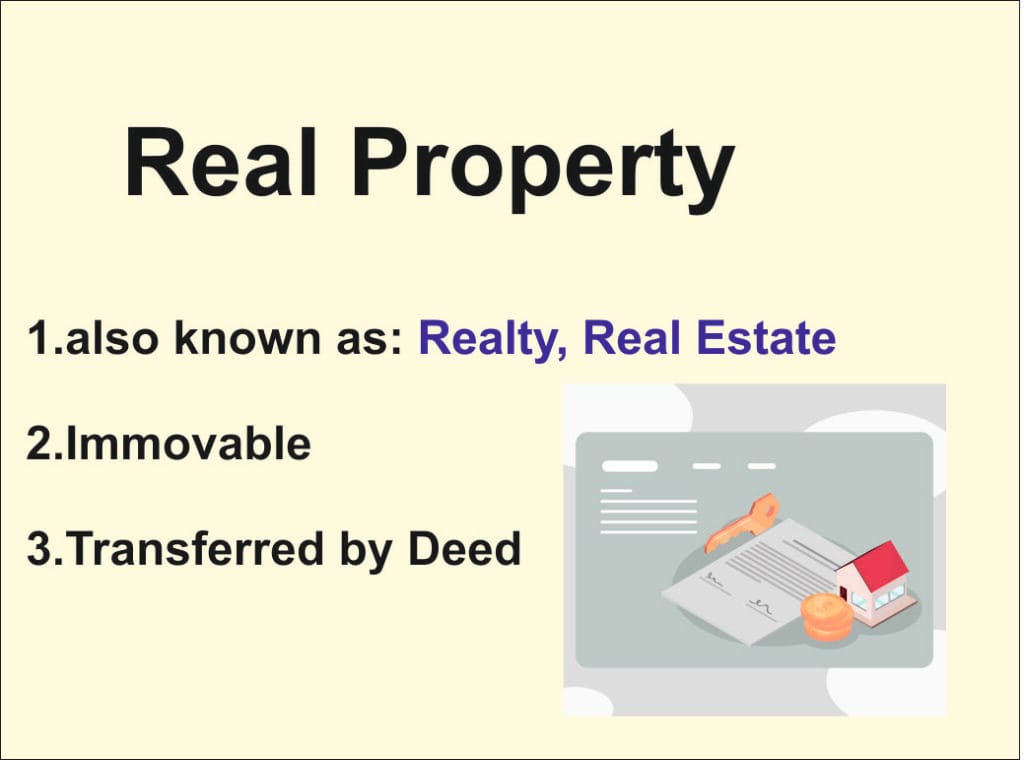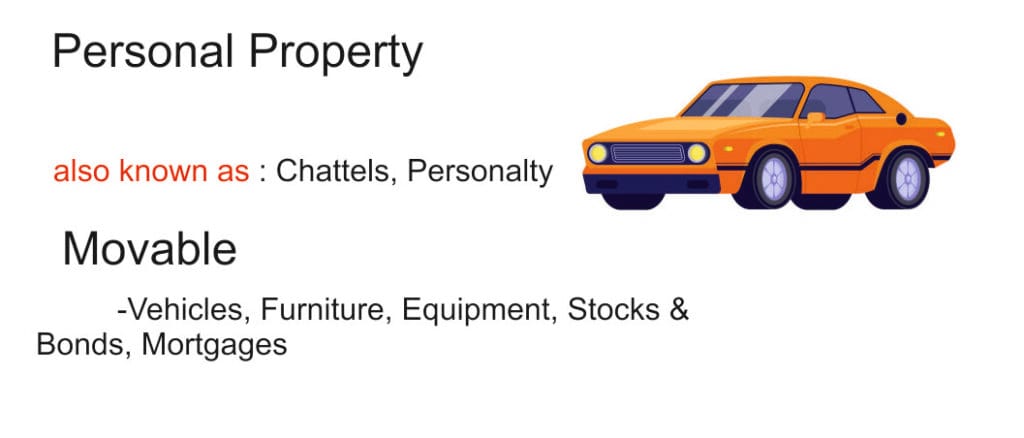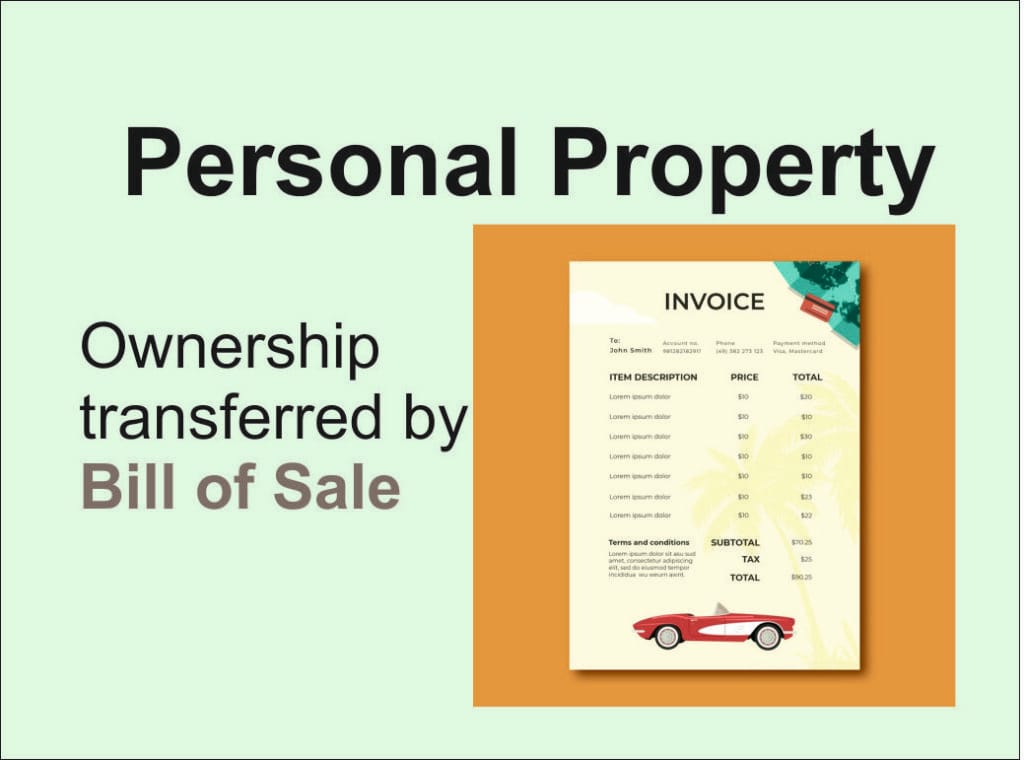The world of Real Estate and its inherent law has such a wide scope that it just not only covers land and buildings but also other properties necessary for the mankind. In today’s world, the term property has included many assets and even rights that it encompasses everything from the piece and parcel of land to the furniture within a home. Property can be understood with a broad perspective via two terms – Personal Property and Real Property which are the two primary types of the property.
As a student of Real Estate law, one has to be conversant with the meaning of and the difference between the two kinds of properties viz. Personal Property and Real Property. This is important since the knowledge of legal, financial and practical aspects of these two different terms has a huge impact on everything from ownership rights to taxation and inheritance too.
Real Property
Real Property of course is the land (earth) and anything that is attached to it. So, when we think about real property, some other terms are Realty and Real Estate. Real Property is anything that is immovable, the land and things that are attached to it. The Real Property is transferred by a Deed and a Deed is signed by the grantor, the grantor is the giver of the deed and the person receiving the deed from the grantor is the grantee.
The Glossary Definition of the term Real Property says that –
The physical land and everything attached to it, and the rights of ownership (Bundle of Rights) in the Real Estate. Also called Realty.
Real Property, often referred to as “Real Estate”, and includes land and anything permanently attached to the land. Buildings, infrastructures, trees and minerals, Real Property encompasses everything from ground beneath a property to the structures on it and even the air space above the land. However, the right of air space is often subject to the limitations and governmental regulation and its ownership varies by location.
Characteristics of the Real Property:
- Immovable: Immovability is one of the most distinguishing characteristics of the Real Property whereas Personal Property can be moved from one place to another, but the location of Real Property is fixed.
- Permanently attached: This characteristic of the Real Property provides that the property has to be permanently attached to the earth or fastened to anything permanently attached to the earth. Built homes, swimming pools, commercial buildings, and even things like fences or in-ground pools.
- Value Influence: Real Property is often subject to the value fluctuations and so is subject to changes in its monetary rate. Various factors including location, market trends, and improvements made to the land or structure on it often appreciate or depreciate the value of the Real Property.
- Ownership Rights: The ownership rights appurtenant to the Real Property are various and complex too. Along with the ownership right on the real property, one has certain rights like mineral rights, water rights and air rights. These are the rights to the resources on and around the land which the owner of the real property possesses till he has the ownership of that real property, and these rights can even be separated from the ownership if they are leased or sold.
- Classification: There is a further classification of Real Property into tangible real and intangible real property. Buildings and Agricultural Land are the physical and tangible real property and can be touched. On the other hand, the right to cultivate on another’s field for a consequent five years’ period or the right to collect the amount for building on rent is intangible real property.

Common Examples of Real Property –
Residential Property: Houses, Bungalows, apartments and condos.
Commercial Properties: Buildings for commercial purposes (for e.g. offices and shops), retails stores and warehouses.
Vacant Land: Open and undeveloped land and agricultural land.
Natural and hereditary Attachments to the land: Trees, plants, and any landscaping permanently affixed to the land.
The transfer process of the real property is a complex one and require a lot of legal adherence, research and documentation work unlike personal property. Real property ownership is subject to property taxes, zoning laws, and building codes.
Personal Property
Personal Property is also defined as a Chattel or just the term Personality. Personal Property is anything that is movable, example includes cars, trucks, furniture, equipment, stocks and bonds that you own, mortgages on property, leases on property are all considered to be personal property.
The Glossary Definition of Personal Property says-
Personal Property or the term Personalty includes Tangible items that (usually) are not permanently attached to or part of real estate; any property that is not real property; movable property not affixed to land. Also called Chattel or Personalty.
Personal Property encompasses everything not included in the category of Real Property or which is not classified as a Real Property. Unlike Real Property, Personal Property is movable and its special characteristics which makes it different from the Real Property is that its relocation and alteration is possible without any alteration of land. The tangible items like, furniture, electronics and vehicles and the intangible items like copyright, patents and trademarks are the basic examples of items included in the Personal Property.

Personal property generally speaking is transferred by a bill of sale for example when a home is sold the personal property that might be included such as a washer dryer, refrigerator would be transferred from the seller to the buyer by a bill of sale.
Characteristics of Personal Property-
Mobility: The most significant characteristic of personal property is its movability and the fact that it can be moved from one place to another without making any alteration to land. Personal property has the capability of keep moving and it does not generally remain at one place. Example includes- laptop, or a piece of jewelry.
Flexibility of ownership: Personal Property can be sold and gifted without any hindrance of too much legal documentation work like as in the case of a real property but still there are certain movable property e.g. cars and vehicles which need to be registered with the government. A simple bill of sale is required for the transfer of the ownership of Personal Property unlike in the case of transfer of real property which requires a formal transfer deed.
Diverse Forms of Personal Property: There is a further classification of Personal Property into tangible personal and intangible personal property. Tangible property includes physical properties for example cars, furniture and almirah whereas Intangible property includes assets like intellectual property rights, patents, or stocks.

Difference between Real Property and Personal Property summarized –
| Basis | Real Property | Personal Property |
| Definition | Real property includes land, things attached to the earth or permanently fastened anything attached to the earth and includes real property rights | Personal Property is anything movable and which does come under the scope of real property. |
| Mobility | Real Property is an immovable property and includes intangible immovable property i.e. right to cultivate another’s land and rights to collect lac from trees | Personal Property are movable and often subject to oral transfers. |
| Kinds/Types | Tangible Immovable Property and Intangible Immovable Property are the two kinds of Real Property. All the real property having physical existence are tangible immovable property and all the rights on tangible immovable property which can be kept with another person for a particular period are intangible immovable property. For example, right to collect rent of the building taken on lease. | Tangible Personal Property and Intangible Personal Property are the two kinds of personal property. Examples of tangible personal property include cars, computers and furniture, these are tangible properties having physical existence. Intangible Personal Property includes Intellectual Property Rights, Copyrights and trademarks these kinds of intangible property are different from Intangible Immovable Property (which is a real property) in the sense that these properties are not only confined to the use of an immovable property but have diverse aspects. |
| Transfer of Ownership | Transfer of ownership of a Real Property is not simple, and it requires complex documentation and legal work to give effect to the transfer of ownership of the Real Property. Such documentation work requires Title Deeds. | Transfer of ownership of Personal Property generally gets effective by a simple oral transfer or sometimes by a Bill of Sale. |
| Taxation | Real Property is often subject to the Property Taxes. | On the transfer of Personal Property, the state generally collects the sale tax. |
| Legal Documentation | Ownership of Real Property is shown by the title deeds and the scope of the use of the Real Property is confined by the zoning laws documentation. | Registration in case of ownership of Vehicles (being a personal property) and even for their transfer, there is another document require i.e. Bill of Sale. |
| Ownership Rights | The scope of the ownership rights of the Real Property is huge and includes right on minerals, air space and water rights. | The scope of the rights of Personal Property is not too wide as compared to the Real Property since it includes the right to use it as per the applicable laws and even to dispose it of. |

I am a Commerce Graduate and Real Estate Consultant.


